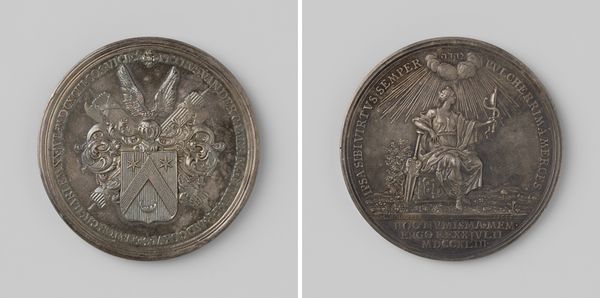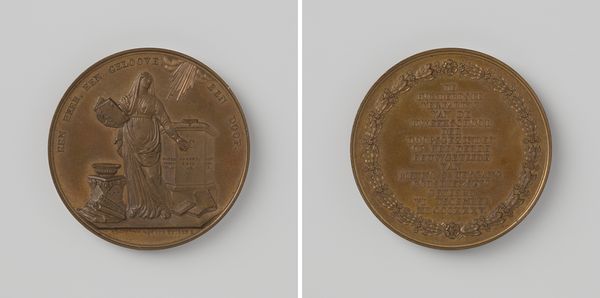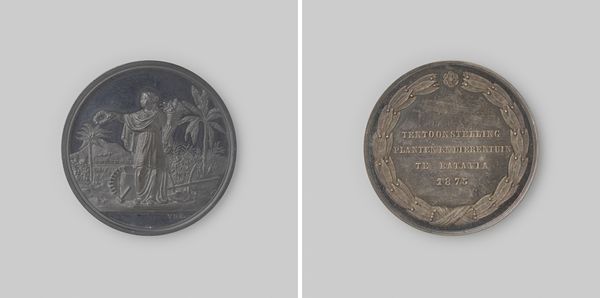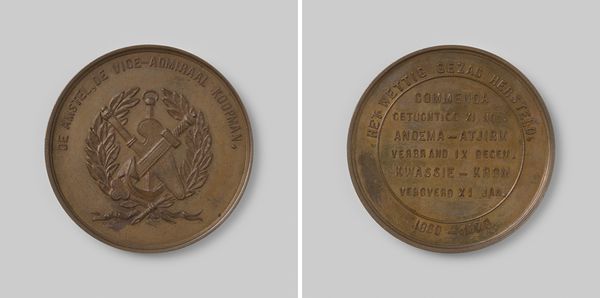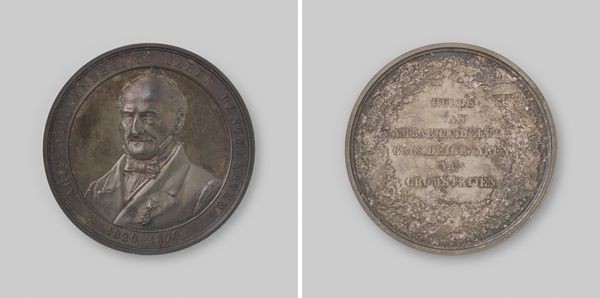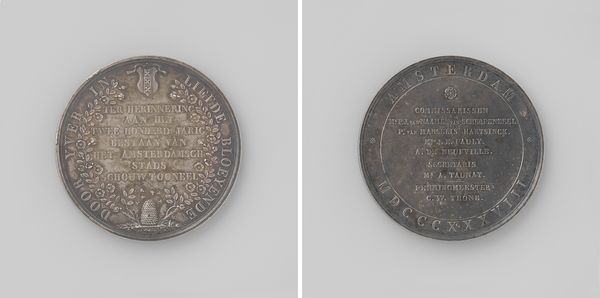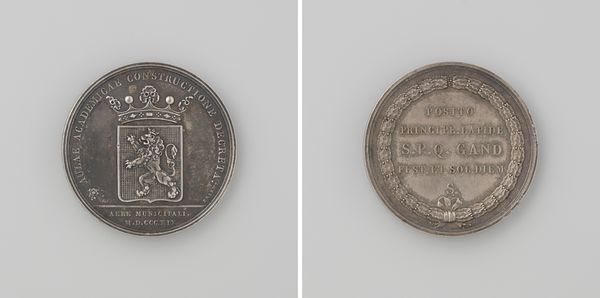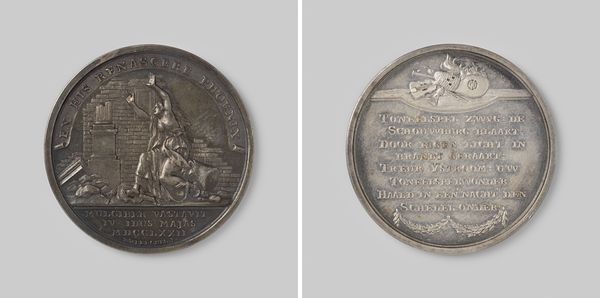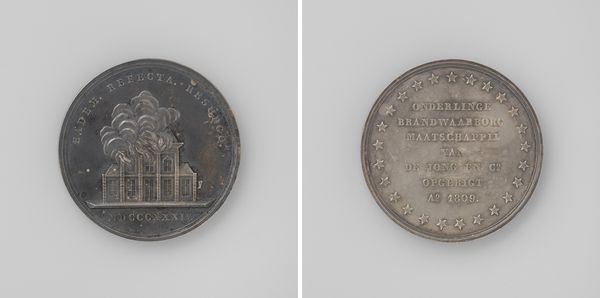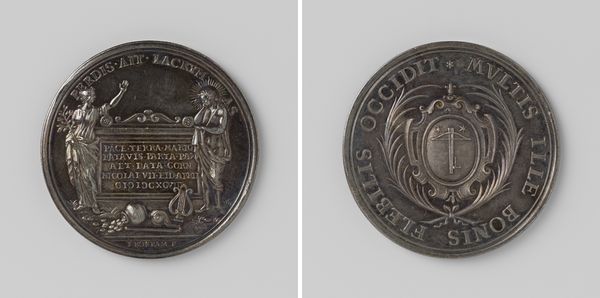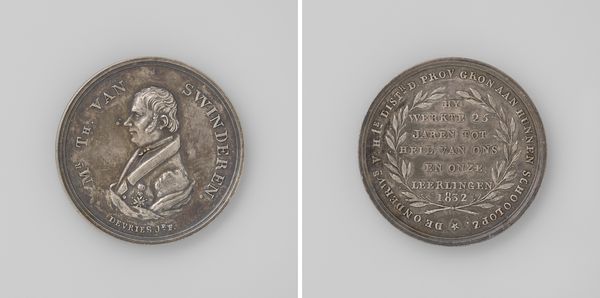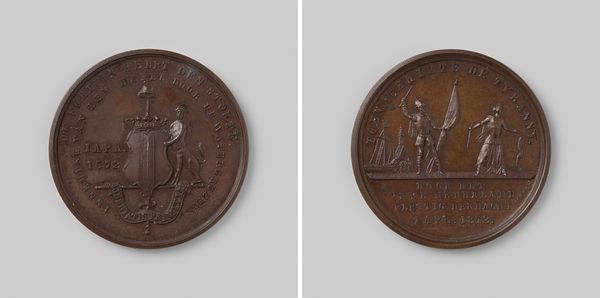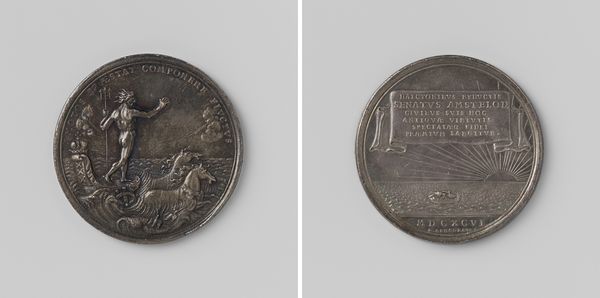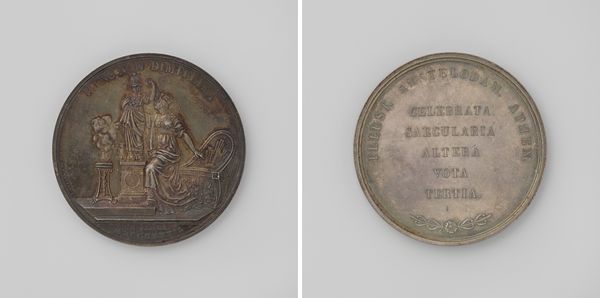
Bevestiging en reorganisatie der Belgische gerechtshoven en rechtbanken Possibly 1830
0:00
0:00
Dimensions: diameter 4 cm, weight 35.23 gr
Copyright: Rijks Museum: Open Domain
Curator: Here we have a metal relief print titled "Bevestiging en reorganisatie der Belgische gerechtshoven en rechtbanken" – loosely translated, it addresses the confirmation and reorganization of Belgian courts and tribunals. The artist is Adrien Hippolyte Veyrat, and the piece likely dates back to 1830. Editor: The cool, silvery metal and the geometric precision of the lines create an immediate sense of stark authority. There is very little relief on this print. What statements might the work offer? Curator: From a formal perspective, the symbolism is rather clear: the scales of justice are prominent, flanked by fasces, and all overseen by a sword pointed upwards, suggesting authority and vigilance. It’s all very neatly composed within the circular frame, isn’t it? Note, also, the inscription circling the top edges on either side of the work. Editor: The piece emphasizes the tangible tools and authority. We must consider how Veyrat might approach engraving onto metal. This requires immense precision and strength of labor. What social context can the work bring us into? Curator: Certainly. The neoclassical style speaks to the rational ideals of the time and the theme nods to the very recent history of Belgium as it confirmed courts after becoming independent of the Netherlands in 1830. Editor: It is indeed curious how Veyrat seems to portray lawmaking more through the work it generates through metal, tools, and hands than a broader sentiment of justice, history or fairness. Curator: The arrangement seems intentionally created and symmetrical as we see that tools are in line. Veyrat perhaps wishes to portray it as all is, ultimately, just and true. It all brings it back to authority, law and geometric truth, but does the material give some insight, too? Editor: Perhaps in emphasizing labor as it applies to justice. It may represent justice and social labor as a type of practice done not only by the minds of man but by his labor and hand. I had not looked at it from that vantage, but I’m inclined to now!
Comments
No comments
Be the first to comment and join the conversation on the ultimate creative platform.
